These rare photos reveal what life in 1800s America really looked like, which even textbooks cannot explain. This visual journey pulls back the curtain on a country still figuring itself out. Keep scrolling for a look at history that’s raw, real, and way cooler than it gets credit for.
President John Quincy Adams (1843)
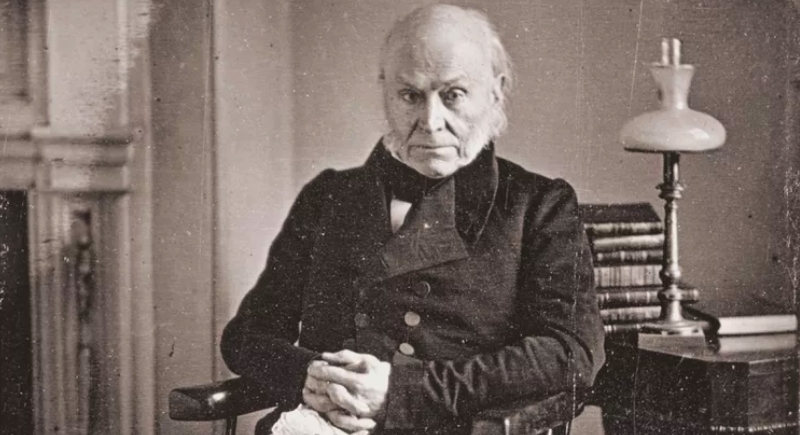
This is the oldest known surviving photograph of any U.S. president. John Quincy Adams was 75 at the time and long out of office. The daguerreotype, taken by artist Philip Haas, shows the sixth president seated with folded hands and a no-nonsense stare that could probably quiet a rowdy Congress.
California Gold Rush Miners (1852)
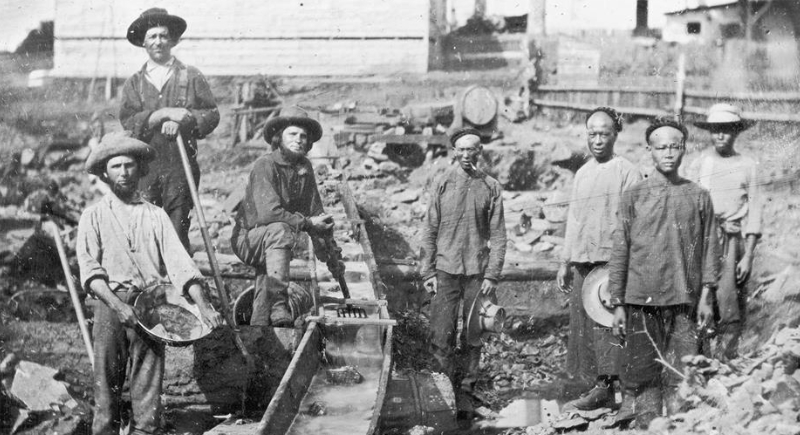
This snapshot from 1852 captures the human engine that powered the California Gold Rush. Standing beside a sluice box and a muddy worksite, this group of miners includes both Chinese and white laborers, which shows the global flood of fortune-seekers drawn in by gold fever.
Former enslaved people, Virginia (1862)

This is a group of formerly enslaved individuals outside a wooden structure in Virginia. It was taken shortly after the Union’s Peninsular Campaign in 1862 and the scene represents a turning point in American history. As Union forces moved through the South, many enslaved people escaped and sought safety behind Union lines.
Pioneer Run Creek Oil Field (1865)
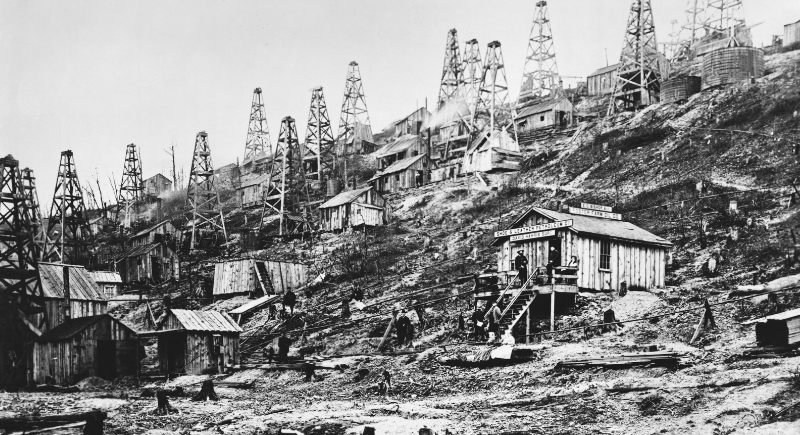
Pioneer Run Creek in Pennsylvania looked more like a wooden porcupine than a town by 1865. Oil derricks crowded the hillside and met together in every direction as prospectors rushed to tap into the booming petroleum craze.
Main Street, Salt Lake City (1867)
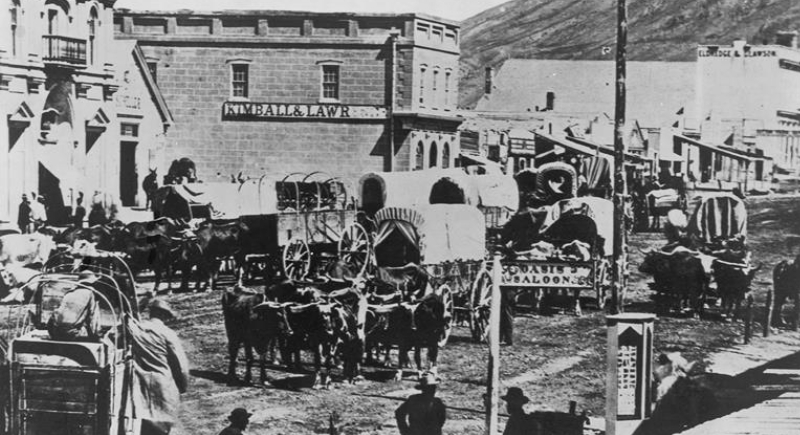
Main Street in Salt Lake City in 1867 was bustling with wagons, oxen, and the kind of traffic jam only the 19th century could produce. It was lined with sturdy stone buildings and a mix of shops and saloons. The street served as a key stop for pioneers, traders, and settlers heading west.
The White House (1846)
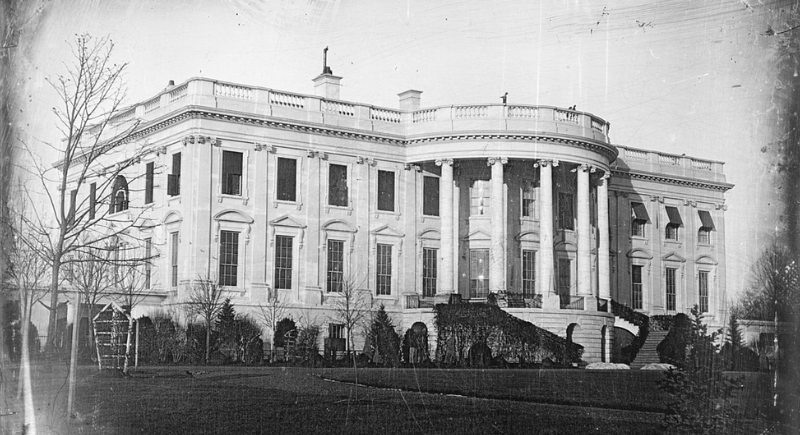
The 1846 image of the White House (or as it was called then, the “Executive Mansion”) is as calm as Washington gets. It was captured by John Plumbe Jr., the city’s first professional photographer and taken during James K. Polk’s presidency, long before presidential motorcades or Rose Garden press briefings were a thing.
Dolley Madison and Niece (1848)
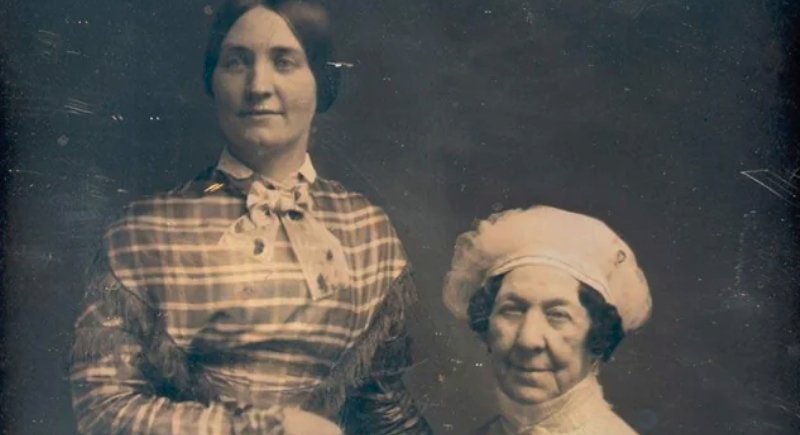
Dolley Madison, seated here beside her niece, continued to command respect and admiration long after her time as First Lady. She is known for her political savvy and unmatched hosting skills. She helped shape the role of the First Lady and turned the Executive Mansion into a cultural hub.
Thomas Edison (1878)
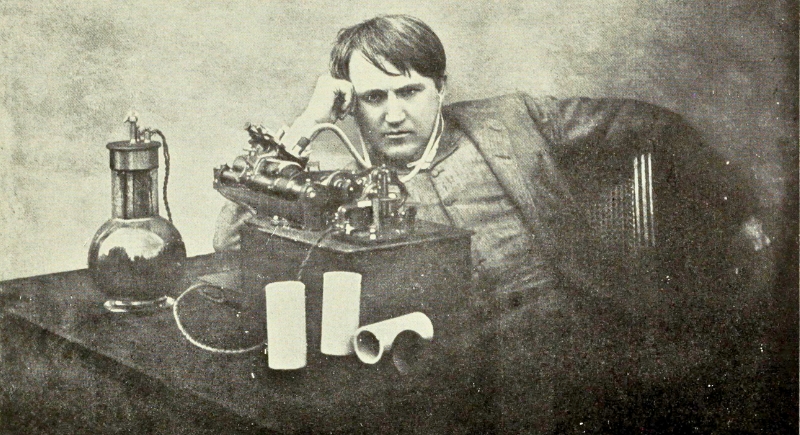
Thomas Edison didn’t just invent stuff—he looked like he invented stuff. In this 1878 portrait, Edison leans on a table next to his early phonograph setup, wearing the kind of expression you’d expect from a guy who barely sleeps because he’s too busy changing the world.
William H Webb Shipyard (1863)
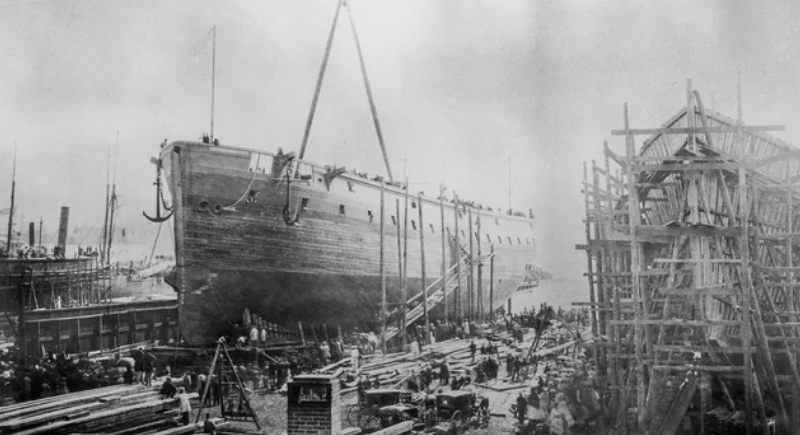
William H. Webb’s New York shipyard buzzed with energy in 1863, as this massive vessel took shape under a haze of sawdust and steam. Webb, one of America’s top shipbuilders at the time, turned his yards into a production powerhouse. Workers hauled timber, hoisted rigging, and swarmed the decks.
Brooklyn Bridge Under Construction (1875)
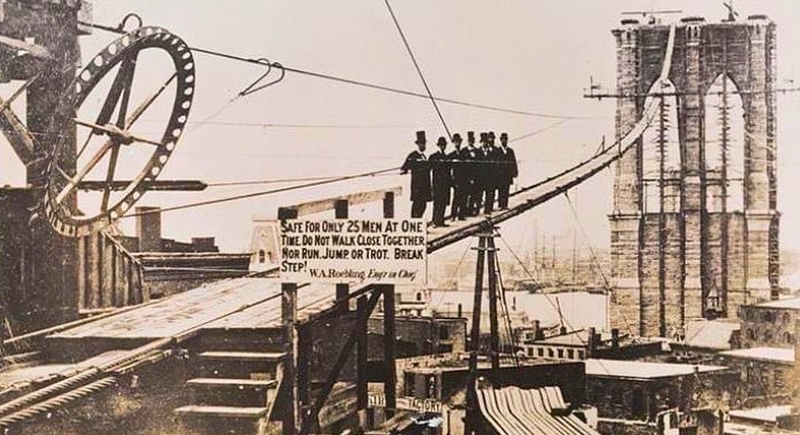
The sign says it all. Solid advice when you’re hundreds of feet above the East River on a swaying cable walkway. Engineer Washington Roebling oversaw the ambitious project. The bridge eventually opened in 1883, but this snapshot captures the guts, grit, and gutsier fashion of engineering history in the making.
The Statue of Liberty’s arm, Philadelphia World Fair (1876)
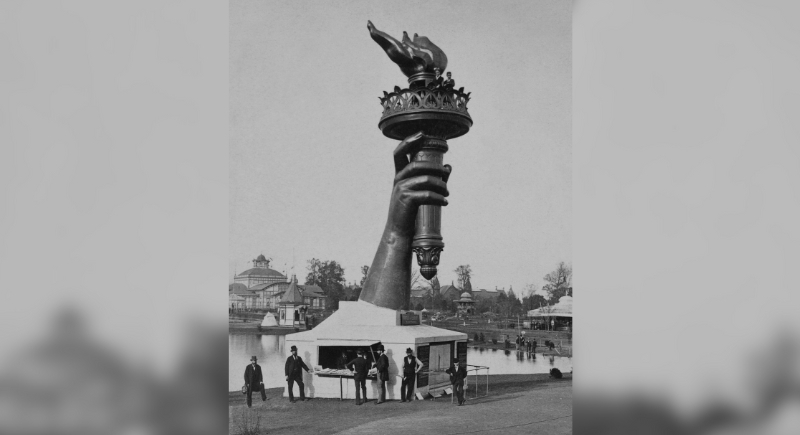
Before Lady Liberty stood tall in New York Harbor, her arm and torch made their own debut at the 1876 Centennial Exhibition in Philadelphia. Visitors strolled through the fairgrounds and suddenly came face-to-flame with a massive hand sticking out of the ground like some kind of patriotic sci-fi scene.
The Statue of Liberty’s Toes (1885)
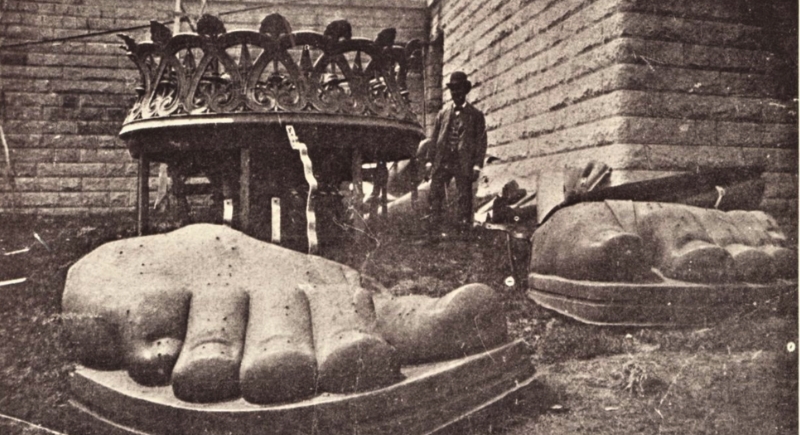
Not exactly the grand debut you’d expect, but in 1885, this odd scene marked real progress. After years of planning and fundraising, the full Statue of Liberty finally arrived in New York, shipped from France in 350 parts packed into 214 crates.
International Council of Women (1888)
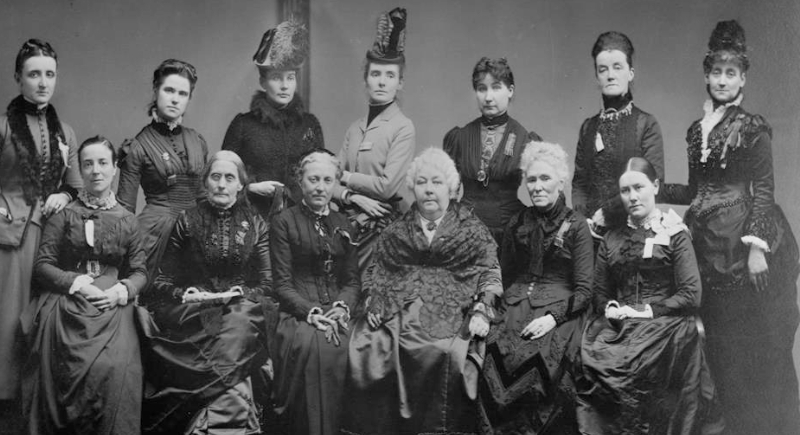
March 1888 brought serious energy to Washington, DC, as the first International Council of Women gathered in full Victorian force. The event was organized by Elizabeth Cady Stanton and Susan B. Anthony. It pulled in 49 delegates from nine countries—a massive show of unity for women’s rights at the time.
Italian Immigrants in New York (c.1897)
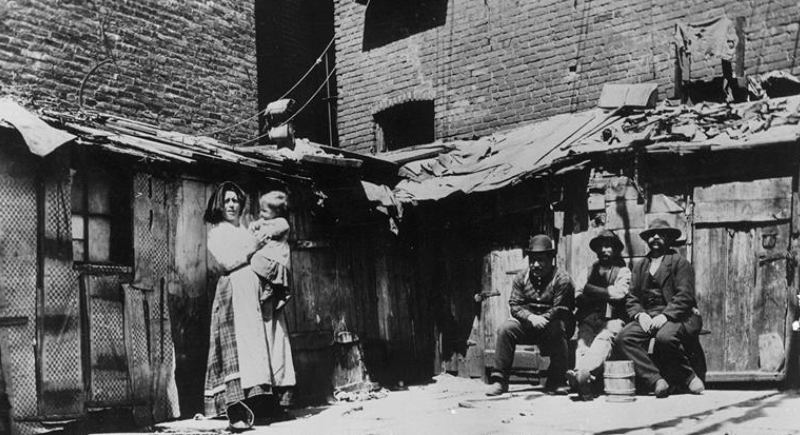
Jacob Riis took this photo around 1897 on Jersey Street in Manhattan, showing Italian immigrants living in a run-down shack. It captured the harsh reality many families faced in New York’s overcrowded slums. Riis’ 1890 book How the Other Half Lives forced the public to confront conditions in tenement neighborhoods.
Skyscrapers in Chicago (1890s)
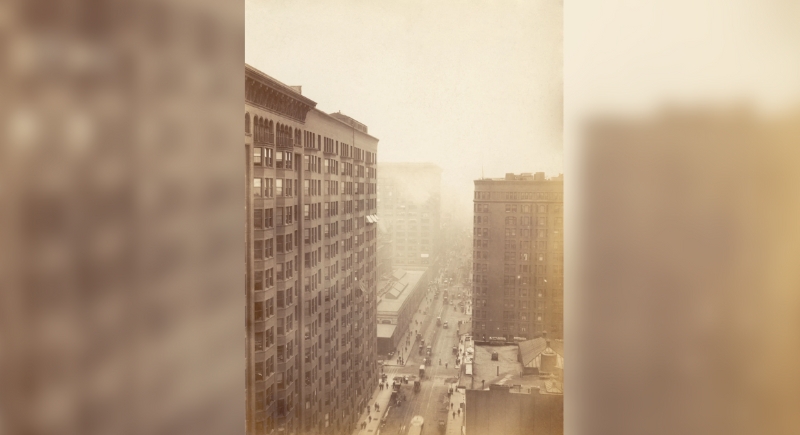
Chicago built upward fast after the Great Fire of 1871. By the 1890s, the city had transformed its skyline with some of the world’s first steel-frame skyscrapers. This photo shows busy downtown streets lined with tall buildings that pushed engineering limits and redefined modern architecture.